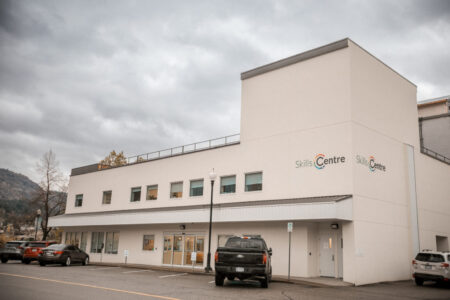Current job market sluggish but long-range forecast positive: province
The cold wind of winter might be blowing in snow to the West Kootenay-Boundary region, but it also may be bringing with it some good news on the labour front.
According to recent statistics from the ministry of Jobs, Tourism and Skills Training and Responsible for Labour, the West Kootenay-Boundary is expected to grow steadily in the next nine years.
In the Industry Outlook Profiles, detailed employment growth and job openings forecast information has predicted around 134,700 job openings for the southeast region — including the West Kootenay and Boundary — by 2025.
The Kootenay-Boundary unemployment rate was up significantly last month compared to the same time last year. It stood at 9.2 per cent in November compared to 6.1 per cent in November 2015 — the second highest rate in the province after the northeast region.
However, according to provincial data the labour force in the Kootenay-Boundary was reduced last month compared to 2015. There were 66,000 people working — down from 72,000 — with 6,700 looking for work, up from 4,700 searching for work in 2015.
Overall, the provincial jobless rate was 5.8 per cent, down from 6.2 per cent last year, while the national rate was 6.8 per cent (unchanged).
Almost one million job openings are expected in B.C. by 2025. Similar to in the Kootenay-Boundary, two-thirds of B.C.’s job openings will be from retirements and one-third from economic growth. Nearly 80 per cent of job openings in B.C. will require post-secondary education.
Elsewhere across the province by 2025, thousands of new job openings are expected:
- Vancouver Island/Coast: 147,900 job openings
- Mainland/Southwest: 596,400 job openings
- North Coast/Nechako/Northeast and Cariboo: 54,600 job openings
Employment has continued on an upward trend and is now at record highs of over 2.3 million.
For more information, please go to https://www.workbc.ca/Labour-Market-Industry/Industry-Information.aspx.
The Industry Outlook Profiles include descriptions of the 58 featured industries and provide the most up-to-date information on projected industry employment growth and job openings for B.C. and its regions, as well as occupational employment, job openings forecast and prevailing wages.
Labour market demand and supply are influenced by a combination of trends that change from year to year.
Labour market projections in the profiles are based on available economic and labour market data from Statistics Canada and other sources, industry growth and population projections and consultations with employers, industry partners and representatives from key sectors. They are meant to reflect general expected trends over the medium to long term.



























Comments